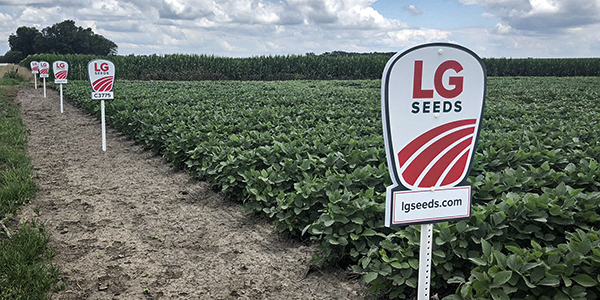AGRONOMICSUPPORT
YOU CAN TAKETO THE FIELD
Why Plots Still Matter
Plots can help determine differences between several inputs such as hybrids, seed treatments, fertilizer treatments or fungicide treatments, just to name a few. What is most important is understanding how to use plots as a tool to evaluate hybrid performance. Several items come into play when planting a plot or utilizing other available plot information.
- Don’t limit the location.
Growers tend to only analyze data from nearby plots. Evaluating a hybrid over a large area in a number of trials can present a clearer picture of the adaptability and stability of a product. Test plots will be most effective if they are planted in a field that represents the entire operation. When working with an operation that has a mix of high yields and stressful soils, the best practice is to plant the same plot in both situations to determine how each hybrid performs in each scenario. The most reliable information comes from multi-year, multi-location data, so trials should be replicated as much as possible.
- Find plots with a check.
The idea of a “check” is to use one hybrid systematically across the plot between entries. The ideal plot setup is to have a check between each variety, so a formula can be applied to adjust for the variation of the check and create a “true or adjusted” yield. Checks can also be placed between every two, three or four hybrids. However, increased space between checks makes the adjustment formula progressively less accurate. This adjustment may raise or lower the actual harvested yield. Adjusted yield data from plots with a check, or multiple checks, is considered more accurate data than plots without a check.
- Verify the planting population.
All hybrids have a recommended planting population. However, it is rare that hybrids are planted at their recommended rate in a plot. Growers should compare the planting population of the plot to their average planting rate. This will create a clearer picture of the plot data to determine if it is comparable to their farm.
- Analyze applicable information.
There are many ways to evaluate plot data, so growers should evaluate the information that is most important to their operation. For example, if a grower’s average planting population is 35,000, a plot planted at 20,000 is not going to be insightful for their farm. At the same time, if a farm sits on soil with high water-holding capacity, a dryland plot will not provide relevant data for that farm. These factors should be taken into consideration before using plot data to drive decisions.
At the end of the day, plots are still a tried-and-true way to evaluate multiple products in several locations. Plot data and product performance information from across the nation is continuously updated at lgseeds.com.
Ready to use plot data to make a field-by-field plan? Talk business with the LG Seeds team today.





